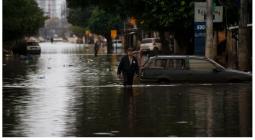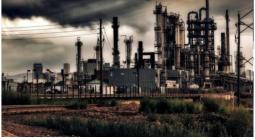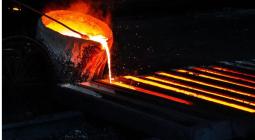As the Coalition goes nuclear, Labor is free to ensure fossil fuels are burned with abandon and little scrutiny
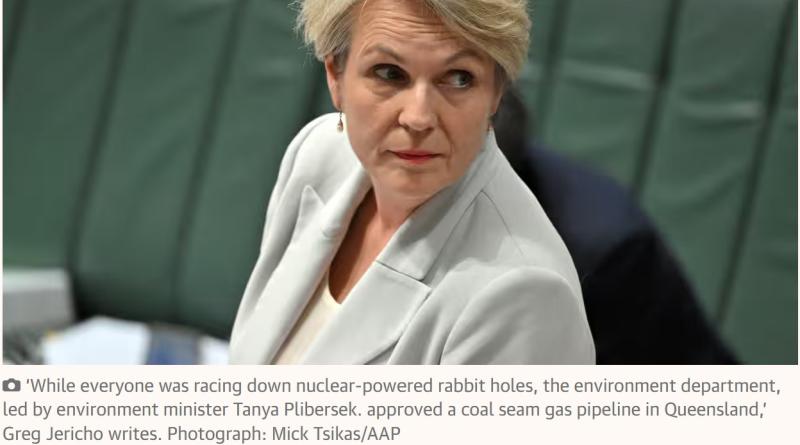
The sham of Australia’s climate change policy has been made clear in the past two weeks. No, not nuclear power. Last Friday, while everyone was racing down nuclear-powered rabbit holes, the environment department (led by the environment minister, Tanya Plibersek) approved a coal seam gas pipeline in Queensland. This approval “has effect until 30 June 2069”. And on Tuesday the department approved the Atlas stage 3 gas project in Queensland out to June 2080.
Those dates are rather beyond 2050 when we’re supposed to be at net zero emissions. They are also when temperatures will be well over 2C above the preindustrial average.
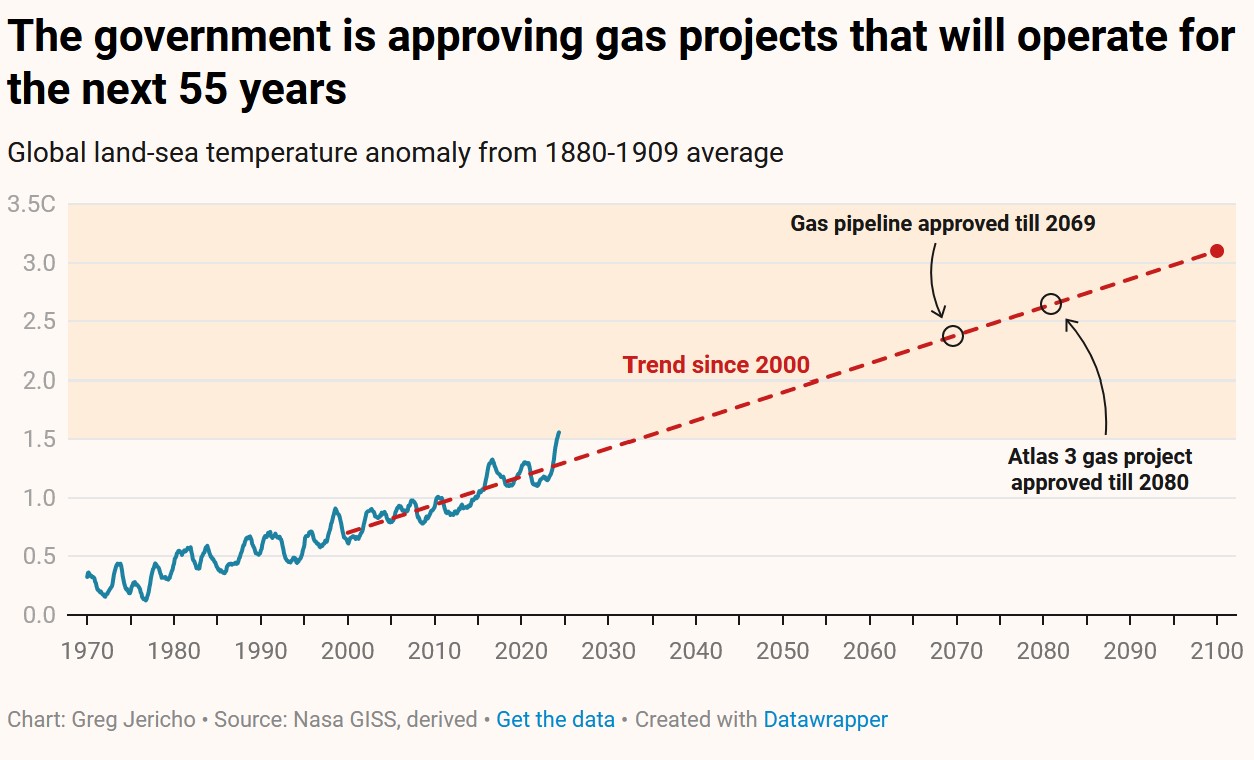
The latest Intergovernmental Panel on Climate Change report suggests business as usual would lead to a 3.2C increase in temperature by 2100. This is roughly in line with the trend increase since the turn of the century.
Joëlle Gergis in her Quarterly Essay Highway to Hell notes that under this scenario temperatures in Australia rise by as much a 4.4C. But that’s if things don’t get worse. Under a “high-emissions scenario”, temperatures by the end of this century are likely to rise between 3.2C and 5.6C.
And a high-emissions scenario is one in which governments keep approving new gas and coalmines.
This is the ghastly horror of the nuclear power debate. It’s a faux argument about what might happen in (let’s be generous) 25 years, rather than about what is happening today (or last Friday).
The Aemo’s new integrated system plan also brings this to the fore. Australia needs more renewables to reduce our emissions now and replace coal-fire powered stations.
And reducing emissions now is critical, because this is the current picture:
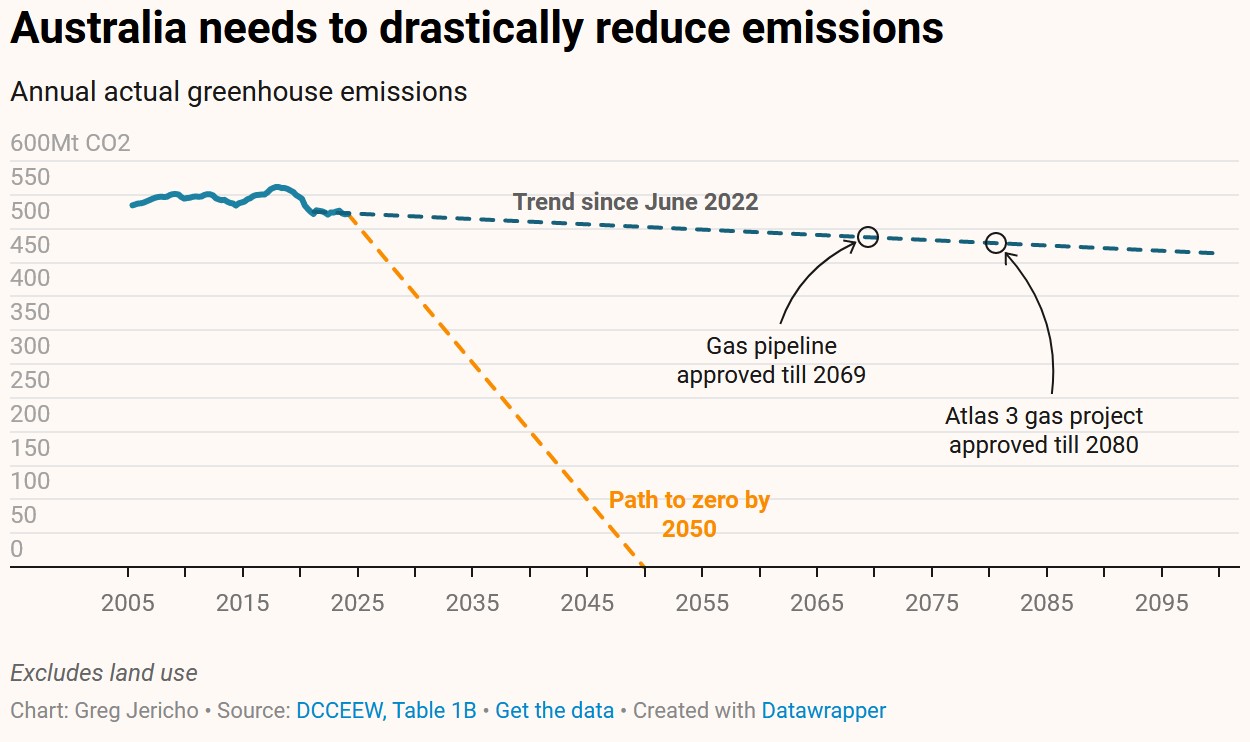
Since 2005 Australia’s emissions have fallen only 2.5%. But if the trend since 2020 continues to 2069, emissions would only be 9% below 2005 levels.
Not quite net zero.
The government likes to say emissions are down 29% but that’s just spin for the gullible.
The 29% includes land use, which means we get credit for not cutting down as many trees as we did in 2005. It’s dodgy accounting that doesn’t honestly measure changes in emissions:

But you might think we need more gas, because we are about to run out.
Sorry, no.
The reality that needs to be tattooed on everyone’s eyeballs is that Australia has more than enough gas.
The latest gas statement of opportunities report notes that about 72% of Australia’s gas heads overseas – including about 23 megatons from Gladstone in 2023.
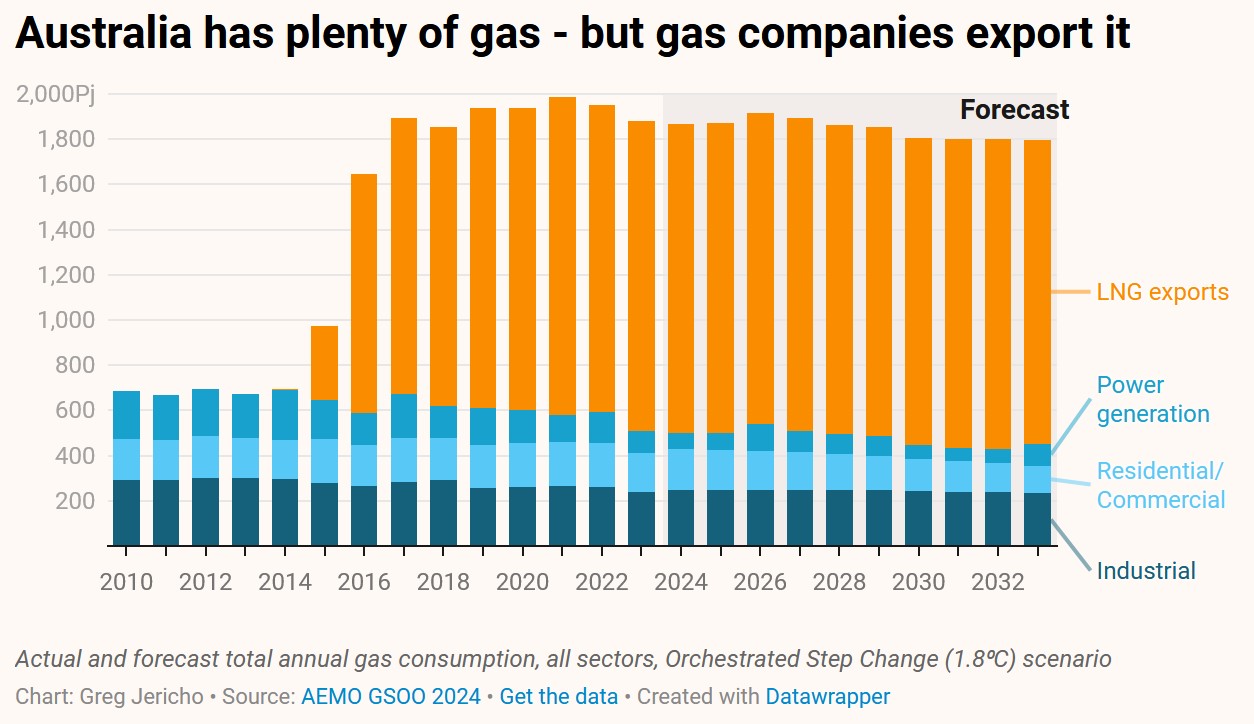
The gas industry argues we can’t count that as Australia’s gas. Last year the chief executive of the gas lobby group Australia Energy Producers, Samantha McCulloch, told a Senate committee that the gas “wouldn’t have been produced without that export market there”.
Remember the actual conversion of gas to liquefied natural gas uses more of Australia’s gas than does all Australian manufacturing or do all households in Australia:
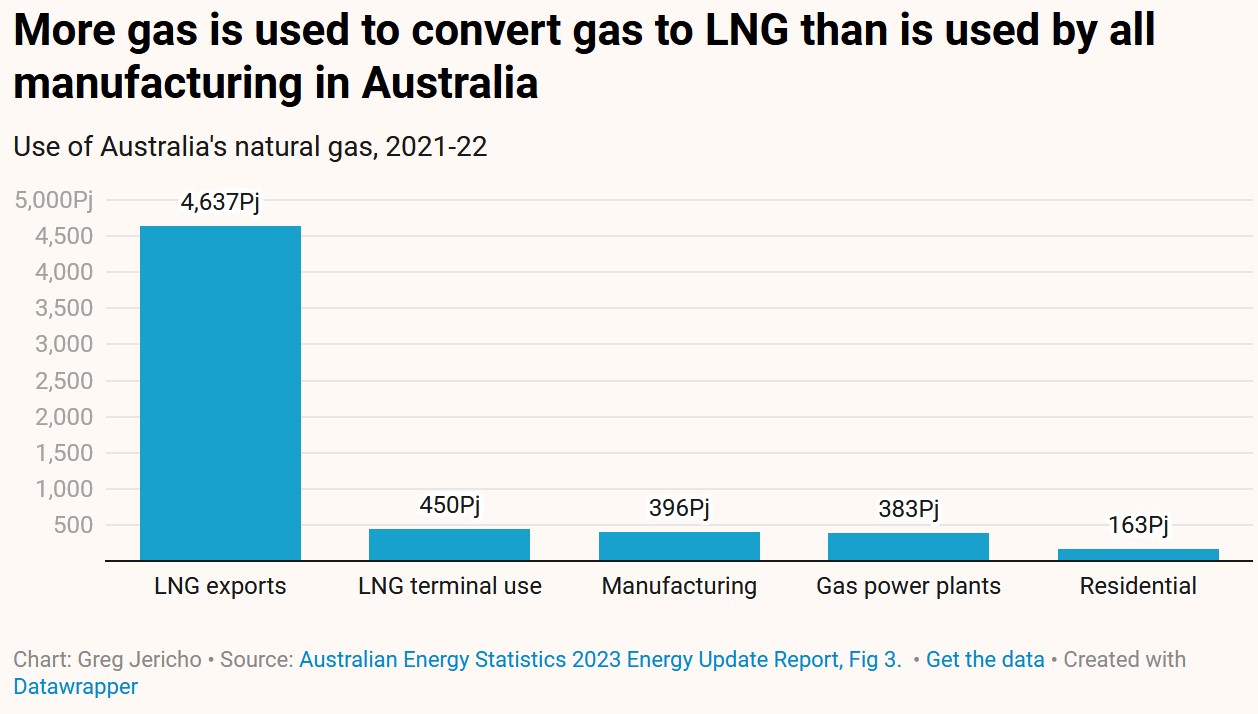
And a new gas pipeline (even if it is for gas that ends up being used domestically) will not make gas cheaper. As I wrote a decade ago, now that we’re connected to the world market, domestic supply makes no difference to prices. By contrast, Aemo notes that “lower cost, lower emission renewables will offer homes and businesses the electricity they need, with greater insulation from international price shocks”.
You might think this is just greedy companies taking us for fools. But no, the government is very much along for the ride.
The “future gas strategy” released by the resources minister, Madeleine King, in the week before the budget made it clear that the government was committed to more gas. Not so much for us as for others, including Japan.
To justify this the government has come up with a nonsensical line that gas exports are crucial for national security because Japan needs them and it would otherwise become reliant upon Russia.
Except Japan sells on more gas to other countries than it imports from Australia. Yes, more!
The Australian Financial Review, bless its corporate soul, argues that this demonstrates just how vital LNG exports are for security because “Japan is using Australian LNG to pursue regional strategic energy security”.
Please.
At this point you also have to ask: is it really “Australian LNG”?
Australian governments don’t charge royalties for gas drilled offshore, so we give it away for free and they end up paying bugger all petroleum resources rent tax. And if it is drilled onshore the government excludes it from being subject to the PRRT.
It’s a sweet deal for gas companies – they have got us coming and going.
And who is doing this exporting? Not “Australia”.
For example, Inpex is a Japanese company that operates the Ichthys LNG gas field off Australia’s north-west coast. It pays no royalties for the gas it extracts. It exports all of it to Japan, where it can then be sold on to other nations. Taxation? Pfft. The Ichthys LNG gas field was projected to never have to pay any PRRT.
Ever get the feeling you’ve been cheated?
Far from being outraged, the government seems to like being conned – it even spruiks for the companies.
Last year the foreign affairs minister, Penny Wong, berated the opposition and the Greens in the Senate for voting against a massive expansion of the gas industry: “You know what you’ve been doing? You said no to Santos. You then said no to Woodside. You’ve said no to Inpex.”
At least we know who the government cares about.
But with the Coalition now calling for nuclear power and throwing around laughable concept art of reactors that will never be, the government can look good by comparison.
It is free to ensure fossil fuels are released with excess abandon, with little media scrutiny and with less recompense to the Australian citizens who own the gas and will suffer greatly from the climate change caused by their emissions.
And on that score let me leave you with one final thought – for the first time each of the past 12 months set records for the hottest individual months:
Yes, it is important to think about policies that will be in place in 2050 and to govern for the future. But we need to govern for right now, because now we are producing the emissions that will destroy our future.


